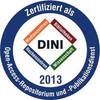Preview |
PDF, English
- main document
Download (56MB) | Lizenz: In Copyright - Rights reserved |
Abstract
This study explores neuron-like PC12 behavior in vitro with a focus on neuronal interactions within confined microenvironments, addressing a gap in neurobiological research related to spatially constrained neuron behavior. While previous studies have examined neuronal interactions with synthetic structures, how neuron populations selectively navigate confined areas has been underinvestigated. This work interrogates neuronal responses to spatial constraints by confining neuron-like PC12 cell populations inside 3D-printed microenvironments on glass substrates. The microenvironments enable localized interaction with neighboring cells and the printed structure. Key parameters analyzed include neurite outgrowth, migration, and cell proliferation in relation to confinement. The results reveal that PC12 cells in contact with structural features exhibit longer neurite outgrowth and a preference for maintaining contact rather than occupying open spaces within the confinement. Time-lapse imaging confirms PC12 cells actively seek structural interactions, a behavior not widely investigated up to now. These findings underscore the role played by spatial constraints in neuronal network formation and highlight how structural contact could guide neuronal behavior in confinement. The insights gained could enhance neurobiological modeling and tissue engineering, and suggest that a better understanding of spatially structured environments could improve neural tissue models. Future research could expand on these findings by varying confinement geometries and materials and investigating additional aspects of cellular behavior, to possibly advance bioengineering efforts that aim to create brain-like tissue structures and neural interfaces.
| Document type: | Dissertation |
|---|---|
| Supervisor: | Selhuber-Unkel, Prof. Dr. Christine |
| Place of Publication: | Heidelberg |
| Date of thesis defense: | 24 July 2025 |
| Date Deposited: | 11 Aug 2025 09:43 |
| Date: | 2025 |
| Faculties / Institutes: | Fakultät für Ingenieurwissenschaften > Dekanat der Fakultät für Ingenieurwissenschaften |
| DDC-classification: | 000 Generalities, Science |
| Controlled Keywords: | Ingenieurwissenschaften, Biologie, Werkstoffkunde |
| Uncontrolled Keywords: | Materials Science, 3D Printing, Biology, Neuroscience |









